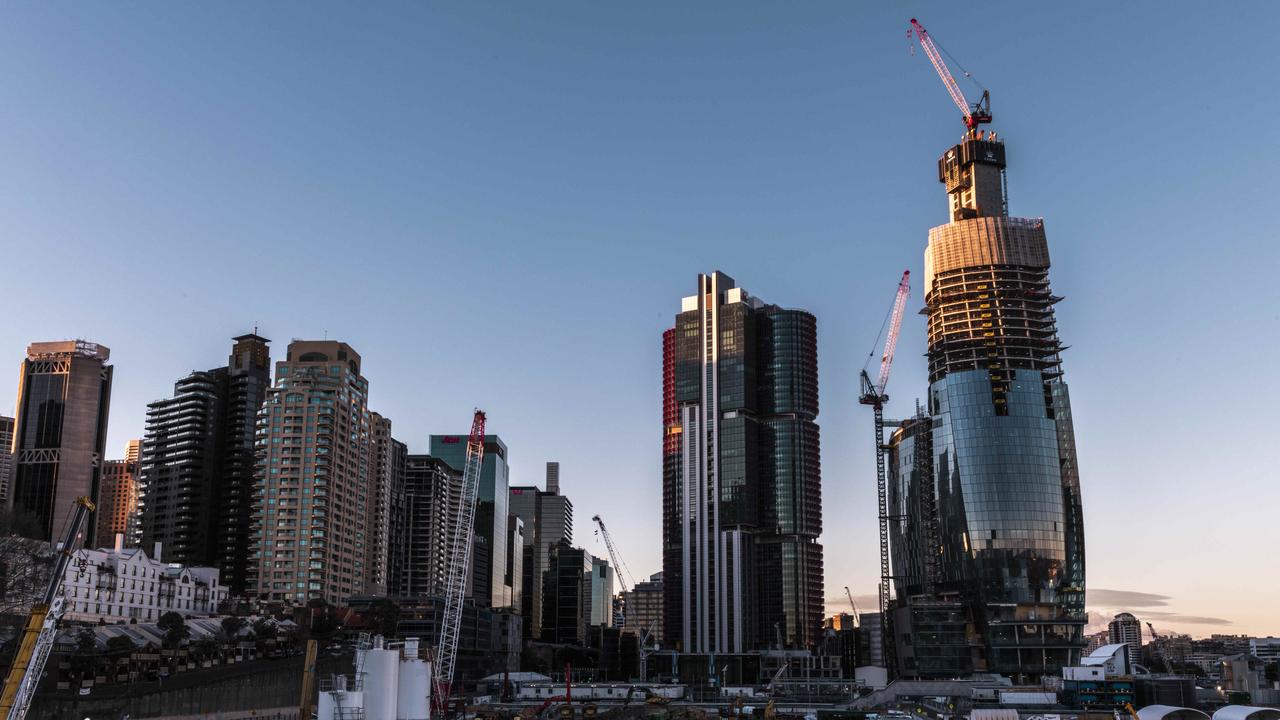Project Sydney: Within 40 years Sydney will be home to eight million people — the same as London and New York are now
HOUSING affordability is the big topic in Sydney. Political parties are putting out policies on a weekly basis and surveys measure just how hard it is for young people to get into the housing market.
Project Sydney
Don't miss out on the headlines from Project Sydney. Followed categories will be added to My News.
- Project Sydney: Three new motorways will put the city in fast lane
- Project Sydney: Push for more nurses to boost patient safety
HOUSING affordability is the big topic in Sydney.
Political parties are putting out policies on a weekly basis and surveys measure just how hard it is for young people to get into the housing market.

And Sydney has reached a crisis point, as those already in their homes want the value of their assets to go up but their children and grandchildren are struggling to afford even a small apartment.
The average apartment in Sydney costs more than $700,000 and the average house more than $1.1 million.
But the question of housing affordability is more complex than the cost of a dwelling.
The average household wage from jobs must be factored in, as must the costs of travelling to and from work.
So any solution to Sydney’s housing affordability crisis must consider dwellings, jobs and travel.
A few decades ago, when Sydney’s population was about three million, it was easier to balance the three issues.
Most people lived in detached houses in the suburbs and they drove to work in a reasonable amount of time.
But as Sydney has grown to five million people the old model just won’t work.
And it won’t get any easier as over the next 40 years we will grow to eight million people.
That is the same size that the major world cities of London and New York are now.
So it is useful to understand how these two global cities now manage their relationship between dwellings, jobs and travel.

The main difference is their travel systems. London and New York have extensive metro rail systems that have swung travel to work onto public transport and away from cars.
This enables commuters to walk to the station then have a rapid transit ride to work. Sydney is heading in this direction but there are challenges ahead.
The biggest challenge to Sydney moving from a suburban model to an urban model is community concerns about the change that must occur.
Former Reserve Bank governor Glenn Stevens, in his recent report to the state government on housing affordability, outlined the benefits of a strong economy as increasing incomes, and ultimately this flows to increased land value in the most desirable locations.
He added: “As a community, we can increase the efficiency of use of such scarce land through ‘densification’. We cannot all live in traditional detached bungalow low-density housing with views and expect to walk to work.”
Mr Stevens defines three types of residents in Sydney.
Firstly he identifies existing residents who value their amenity in suburban neighbourhoods.
Secondly he identifies existing residents who are keen to realise the potential uplifted value of their land.
Thirdly he lists potential new residents who need somewhere to live.
Stevens believes this third group is not represented by local councils, and stronger leadership at both state and federal level is critical to support their interests.
I agree with Glenn Stevens that we need a stronger vision of the inevitable urban future of Sydney and this needs to be presented by our politicians at all levels.
I am concerned that opposition parties can easily exploit the understandable worry that existing communities have about change with exaggerated claims that the government is proposing high-rise towers everywhere that will destroy your neighbourhood.
We need bipartisan support for an urban future that ensures Sydney has an extensive metro rail network, greater density of development within walking distance of the stations and a redistribution of jobs to a network of urban centres.
This model will help with housing affordability by increasing housing supply and supporting the more affordable apartment model.
A number of policy levers need to be pulled to manage the evolving shape of Sydney.
The most important is a fast metro-style rail system as Dr Bradfield planned 100 years ago and for this to underpin where more urban development should go.
The clever approach to having taller buildings around railway stations is that this restricts the horizontal spread of new development so that much of the existing suburbs can stay as they are.
But the comfortable residents in their suburban neighbourhoods must support the aspirations of Glenn Stevens’ third group — the potential new residents, who are highly likely to be the children and grandchildren of those with an existing comfortable home.


